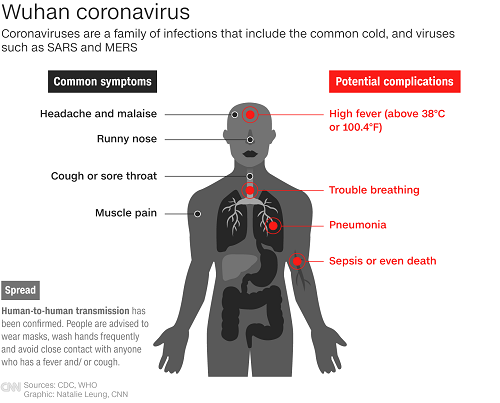Last week, panic began to set in among investors and public health officials across the United States. As the spread of the COVID-19 (Coronavirus) began to ramp up, misinformation and disinformation spread even faster. The World Health Organization appears to be on the verge of declaring the outbreak a global pandemic, and some comparisons are being made to the dreaded Spanish Flu of 1918. But there are some encouraging signs too. New cases appear to have slowed in China, the center of the original outbreak. So what does the average person actually need to know about this outbreak? How deadly is it, and what are the general precautions that should be taken? This week, we’ll look at the global response to the Coronavirus outbreak and what you could expect in the coming weeks and months.
First, some basic stats (estimated figures of course):
Current Infected Number: At least 95,000
Mortality: Over 3,000
Mortality Rate: About 3.4%
Countries with confirmed cases: 79
What We Know
The COVID-19 strain, which stands for Coronavirus Infectious Disease 2019, is very similar to lots of other viruses which act a lot like the flu and circulate all around the world all the time. The difference in this latest one is that it is easily transmissible, more deadly, and appears to last for longer inside the human body. This strain in particular is a lot like the SARS outbreak from the early 2000s, and both seem to have originated in China. There is currently no vaccine for this particular strain. Despite claims by the president that a vaccine will be ready within a few months, it will almost certainly take at least a year for a vaccine to be ready. This is because vaccines need to undergo many, many tests and small-scale human trials to ensure they are effective, have minimal side effects, and don’t accidentally make the outbreak even worse!
What We Don’t Know
The biggest unknown is (obviously) how far this will spread. There are also big questions around the impact of the disease on the economy. As we have highlighted in the recent trade disputes between China and the United States, China is a massive manufacturing center. Supply chains all over the world have been severely disrupted by factories temporarily closing and by travel restrictions all over the world. The wild swings in global stock markets recently have indicated that much of the financial world has finally realized the ways in which this can cause serious problems and could even trigger a recession. While recent interest rate cuts from the Federal Reserve can certainly help ease markets and sidestep further decline, they can’t do much to reopen closed factories.
The Reaction Abroad
But financial investors aren’t the only ones reacting to this outbreak. Governments around the world have been enacting tough policies to attempt to control the spread. The initial response in China was slow and secret. Their strict authoritarian government discourages dissenting speech about problems, which appears to have helped encourage the spread of the virus in the initial weeks. Now China has responded with massive city and province-wide quarantines. Major outbreaks are also forcing the closure of public transportation and services in places like South Korea, Italy, and Iran. Global events such as the Olympics and the Muslim pilgrimage to Mecca (hajj) have been thrown into doubt as well and may be postponed or severely restricted.
The Reaction At Home
The response here at home has been somewhat muddled as well. Thousands of companies have imposed travel restrictions and airlines have issued mass flight cancellations to and from China. There are also mandatory quarantines for many people returning from high-risk provinces in China. We will likely see further measures such as travel bans, cancelled public events, and even school closings if conditions worsen. Though containing the virus is difficult, containing the spread of disinformation may actually be even harder. In an already extremely divisive election year, many political operatives (including the president himself) are attempting to use fear of the virus for their own political purposes. The president claims that “there is no problem” and that the media is hyping the virus to hurt him politically. Meanwhile, opposing political news outlets are quick to place all of the blame on him. But throughout all of this, the public at large is actually the greatest victim here. Unfortunately, the current administration’s tendency to mislead, deflect, and in some cases outright lie about trivial matters means that it is nearly impossible for many people to believe critical facts about containing the outbreak. This is the inevitable (and dangerous) outcome of political ideologies which hold party loyalty above the honest evaluation of the truth.
Basic flu prevention tips
The Bottom Line
But despite all of this, you are still very, very unlikely to catch this virus. And even if you do, around 80% of the infections are very mild. There are simple tips available for stopping the spread such as hand washing, staying home whenever possible, and stocking up on a few essentials to avoid unnecessary trips outside. Much like climate change, pandemics are problems that impact every person on earth, so better collaboration with America’s adversaries like China and Russia is critical in fighting this. But if this outbreak has taught us anything about global cooperation and disaster preparedness, it’s that there isn’t much of that going around at all.




